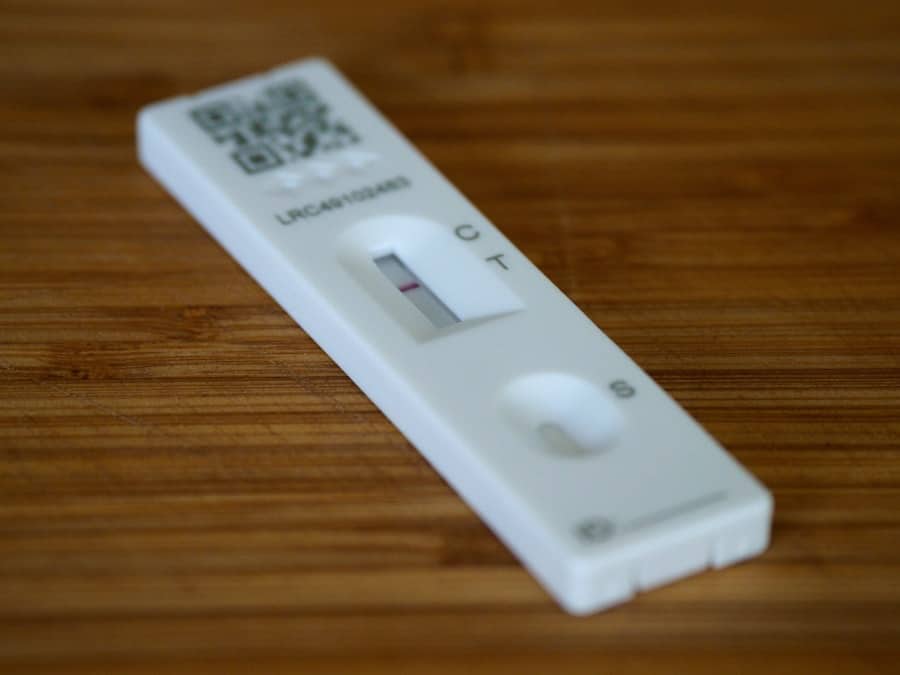Biofeedback is a technique that enables individuals to gain awareness and control over physiological functions that are typically involuntary, such as heart rate, muscle tension, and skin temperature. By utilizing sensors that monitor these bodily functions, biofeedback provides real-time data to users, allowing them to observe their physiological responses and learn how to modify them through various techniques, such as relaxation exercises or cognitive strategies. This process can be particularly beneficial in therapeutic settings, where individuals may seek to manage stress, anxiety, or chronic pain.
The underlying principle of biofeedback is rooted in the concept of self-regulation; by becoming aware of their physiological states, individuals can develop skills to influence their own health and well-being. In recent years, the application of biofeedback has expanded beyond clinical settings into various fields, including sports, education, and entertainment. The gaming industry, in particular, has begun to explore the integration of biofeedback mechanisms into gameplay.
This intersection of technology and human physiology opens up new avenues for enhancing player engagement and experience. By incorporating biofeedback into games, developers can create immersive environments that respond dynamically to players’ emotional and physical states, thereby fostering a more personalized gaming experience. As the technology continues to evolve, understanding the nuances of biofeedback becomes essential for both developers and players alike.
Key Takeaways
- Biofeedback is the process of using technology to measure physiological responses and provide real-time feedback to the user.
- Real-time game mechanics can be enhanced by integrating biofeedback, allowing players to interact with the game using their physiological responses.
- Biofeedback can significantly impact player experience by creating a more immersive and personalized gaming experience.
- Implementing biofeedback in game design requires careful consideration of the technology used and the desired impact on player engagement.
- Biofeedback can be used to adjust game difficulty based on the player’s physiological responses, creating a more dynamic and challenging gaming experience.
The Relationship Between Biofeedback and Real-Time Game Mechanics
The integration of biofeedback into real-time game mechanics represents a significant shift in how games are designed and experienced. Traditional gaming relies heavily on player input through controllers or keyboards, with the game responding to these inputs in a predetermined manner. However, when biofeedback is introduced, the game can adapt not only to the player’s actions but also to their physiological responses.
For instance, a game might utilize heart rate monitors to gauge a player’s excitement or stress levels during a high-stakes moment, adjusting the game’s difficulty or narrative elements accordingly. This creates a more fluid and responsive gaming environment that can enhance immersion. Moreover, the relationship between biofeedback and real-time game mechanics can lead to innovative gameplay experiences that challenge conventional notions of player agency.
For example, a horror game could use biofeedback to detect when a player is becoming overly anxious or frightened. In response, the game might alter its pacing or introduce unexpected elements to either heighten the tension or provide a moment of relief. This dynamic interaction not only keeps players engaged but also encourages them to confront their fears in a controlled setting.
By leveraging real-time data from players’ bodies, developers can craft experiences that are uniquely tailored to individual emotional states, resulting in a more profound connection between the player and the game.
The Impact of Biofeedback on Player Experience

The impact of biofeedback on player experience is multifaceted, influencing emotional engagement, immersion, and overall satisfaction with the game. One of the most significant effects is the heightened sense of presence that players can feel when their physiological states are mirrored within the game environment. For instance, if a player’s heart rate increases during an intense chase sequence, the game could amplify sound effects or visual cues to reflect this heightened state of arousal.
This synchronization between the player’s body and the game world can create a visceral experience that draws players deeper into the narrative. Additionally, biofeedback can serve as a tool for enhancing emotional storytelling within games. By monitoring players’ emotional responses, developers can craft narratives that resonate more deeply with their audience.
For example, if a player exhibits signs of sadness during a pivotal moment in the story, the game could adapt its dialogue or visual elements to further explore themes of loss or resilience. This level of emotional responsiveness not only enriches the narrative experience but also fosters a sense of empathy and connection between players and characters. As players become more attuned to their own emotions through biofeedback, they may find themselves more invested in the outcomes of the story.
Implementing Biofeedback in Game Design
Implementing biofeedback in game design requires careful consideration of both technology and user experience. Developers must select appropriate sensors and devices that can accurately capture physiological data without disrupting gameplay. Common tools include heart rate monitors, galvanic skin response sensors, and EEG headsets that measure brain activity.
Each of these devices offers unique insights into player states but also presents challenges in terms of comfort and usability. For instance, while EEG headsets can provide valuable data on concentration levels, they may be cumbersome for extended play sessions. Once the technology is in place, developers must integrate biofeedback data into gameplay mechanics seamlessly.
This involves creating algorithms that can interpret physiological signals and translate them into meaningful changes within the game environment. For example, if a player’s skin conductance indicates increased arousal during a tense moment, the game could trigger visual effects such as flickering lights or intensified soundscapes to enhance the atmosphere. Additionally, developers should consider how to present feedback to players in an intuitive manner; for instance, visual indicators on-screen could show players their current stress levels or heart rate without overwhelming them with information.
Biofeedback and Player Engagement
Player engagement is a critical factor in the success of any game, and biofeedback has the potential to significantly enhance this aspect by fostering deeper connections between players and their experiences. When players are aware that their physiological responses are influencing gameplay, they may feel more invested in their performance and outcomes. This heightened sense of agency can lead to increased motivation to improve skills or overcome challenges within the game.
For example, a racing game that adjusts its difficulty based on a player’s heart rate could encourage players to push themselves further as they strive for better performance. Moreover, biofeedback can facilitate social engagement among players by creating shared experiences based on physiological responses. Multiplayer games that incorporate biofeedback could allow players to see each other’s emotional states in real-time, fostering collaboration or competition based on these insights.
Imagine a cooperative survival game where players must work together while managing their stress levels; if one player becomes overwhelmed, others could rally to support them based on visible cues from their biofeedback data. This not only enhances gameplay dynamics but also promotes empathy and teamwork among players.
Biofeedback and Game Difficulty

The relationship between biofeedback and game difficulty is an intriguing area of exploration for developers seeking to create adaptive gaming experiences. Traditional difficulty settings often rely on fixed parameters that do not account for individual player skill levels or emotional states. However, by utilizing biofeedback data, games can dynamically adjust their difficulty based on real-time assessments of player performance and stress levels.
For instance, if a player is struggling with a particular challenge and their heart rate indicates frustration or anxiety, the game could lower its difficulty temporarily to provide relief. This adaptive approach not only enhances player satisfaction but also encourages persistence in overcoming challenges. Players may feel less discouraged when faced with difficult tasks if they know that the game will respond to their emotional state.
Furthermore, this system allows for personalized experiences; two players with different skill levels could engage with the same content while experiencing tailored challenges that suit their unique capabilities and emotional responses. This level of customization can lead to greater enjoyment and longer play sessions as players feel empowered rather than overwhelmed.
The Future of Biofeedback in Gaming
As technology continues to advance, the future of biofeedback in gaming holds exciting possibilities for both developers and players alike. With improvements in sensor technology and data analytics, games may become increasingly adept at interpreting complex physiological signals and translating them into nuanced gameplay experiences. For instance, future games could utilize machine learning algorithms to predict player behavior based on historical biofeedback data, allowing for even more sophisticated adaptations in real-time.
Imagine stepping into a VR world where your emotional state directly influences your surroundings; if you feel calm and focused, you might navigate serene landscapes effortlessly, while heightened anxiety could manifest as chaotic environments filled with obstacles. Such innovations could redefine how players interact with games and each other, creating rich narratives driven by personal experiences.
Ethical Considerations in Using Biofeedback in Games
While the integration of biofeedback into gaming presents numerous opportunities for innovation and engagement, it also raises important ethical considerations that developers must address. One primary concern revolves around privacy; collecting physiological data from players necessitates robust data protection measures to ensure that sensitive information is not misused or exploited. Developers must be transparent about what data is collected, how it will be used, and who will have access to it.
Additionally, there is a risk that games utilizing biofeedback could inadvertently manipulate players’ emotions or behaviors in ways that are not fully understood or controlled. For instance, if a game uses biofeedback to heighten tension during specific moments without considering individual differences in emotional responses, it could lead to negative experiences for some players. Developers must prioritize player well-being by implementing safeguards against potential psychological harm while ensuring that gameplay remains enjoyable and enriching.
In conclusion, as biofeedback technology continues to evolve within the gaming industry, it is essential for developers to navigate these ethical considerations thoughtfully while harnessing its potential to create engaging and immersive experiences for players.

